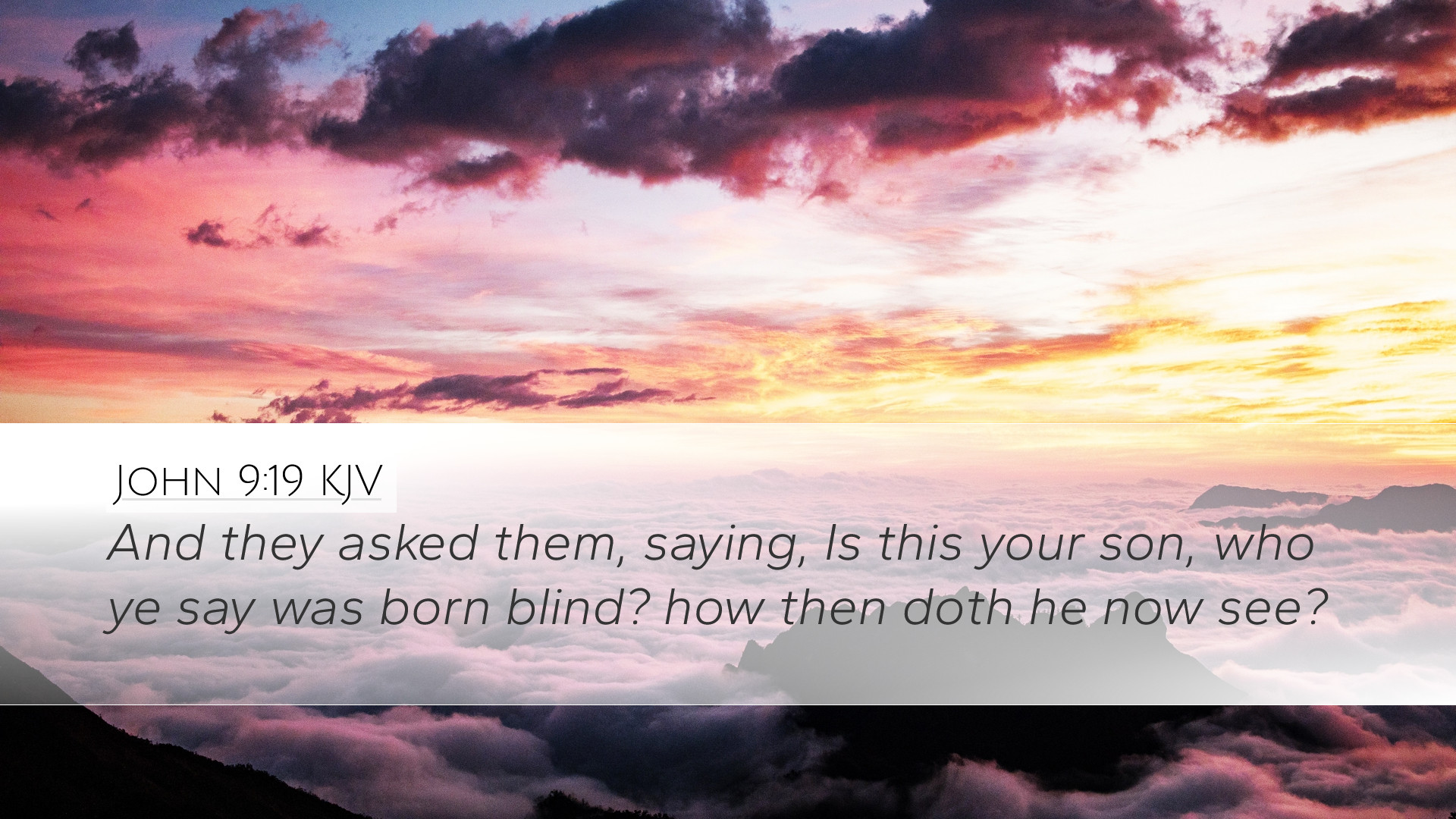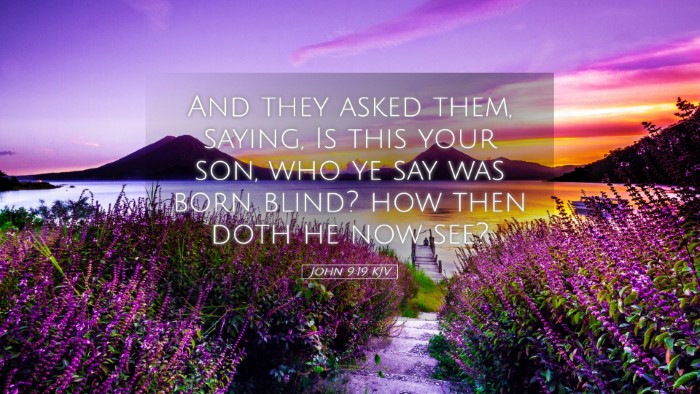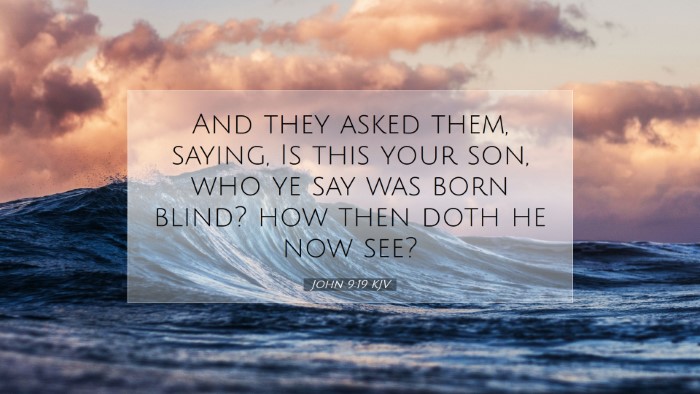John 9:19 Commentary
John 9:19 states: "And they asked them, saying, Is this your son, who ye say was born blind? how then doth he now see?” This verse highlights the tension between the miraculous event of healing and the skepticism of those who are supposed to be witnesses to it. In this commentary, we will summarize insights from various public domain sources, focusing on the theological implications, pastoral applications, and scholarly insights.
Contextual Analysis
The context of John 9 involves the remarkable healing of a man who was born blind. This event is significant not only for the physical healing but also for the theological discourse it ignites regarding sin, faith, and the identity of Jesus. This interaction between the healed man and the Pharisees serves to further unveil the contrasting attitudes towards Jesus' ministry.
Matthew Henry's Commentary
Matthew Henry emphasizes that the inquiry by the Pharisees demonstrates their disbelief and rigid adherence to their laws and perceptions. He notes that:
- Disbelief of Authorities: The authorities' questioning of the miracle highlights their struggle to accept the miracles performed by Jesus, leading to a deeper analysis of their spiritual blindness.
- Identity of the Healed: By asking about the identity of the healed man, the Pharisees reveal their need to verify the authenticity of the miracle, rather than acknowledging the power of God at work.
- Questioning Jesus' Authority: Henry points out that such questions serve to undermine Jesus' authority and purpose, indicating a broader theme of how the religious leaders often reject that which challenges their understanding of God.
Albert Barnes' Notes
Albert Barnes provides a detailed examination of the implications surrounding the question posed to the man’s parents and the depths of the Pharisees’ inquiry. Some salient points include:
- Conditional Belief: Barnes discusses the skepticism of the Jewish leaders and their conditional belief, suggesting that they needed to maintain control over the narrative regarding the miracle.
- Fear of Excommunication: He notes that the fear of being cast out of the synagogue motivated the parents’ cautious responses, illustrating the social and religious pressures of the time.
- Miracles as Signs: The verse exemplifies how the Pharisees' reaction is a case study of how miracles were intended as signs pointing to Jesus’ divine authority but were often met with skepticism and denial.
Adam Clarke's Commentary
Adam Clarke adds a rich theological perspective, addressing the shocking nature of the healing and the ensuing dialogue. His insights include:
- Nature of the Inquiry: Clarke elaborates on the persistent questioning of the parents and the blind man, capturing the tension between evidence and belief. He views the questioning as a refusal to see the truth even in the face of compelling evidence.
- Theological Implications: He posits that this moment reflects a broader theological truth wherein light (understanding) is not just revealed physically but is also about spiritual blindness and the rejection of divine revelation.
- Challenge for Believers: Clarke calls believers to recognize that encounters with Jesus should be affirming of faith and not simply factual accounts; true understanding encompasses acknowledgment of who Jesus is.
Theological Implications
The interaction captured in John 9:19 serves several critical theological implications for the church today:
- Faith and Doubt: The insistence on tangible evidence reflects a common struggle in faith communities. This passage encourages pastors and theologians to address the doubts that accompany faith, encouraging deeper exploration rather than mere acceptance.
- Community and Isolation: The fear of exclusion felt by the healed man's parents suggests a broader relational dynamic within the church where believers may hesitate to express their faith due to societal pressures.
- Revelation of Jesus: This moment calls for a deeper understanding of who Jesus is—beyond a miracle worker, emphasizing Him as the Savior who gives spiritual light to the blind.
Pastoral Applications
For pastors and church leaders, the intricacies present in John 9:19 offer various practical applications:
- Encouragement in Doubt: Pastors are encouraged to create spaces where questions may be asked freely, mirroring the inquiry of the Pharisees in a manner that fosters faith development instead of fear.
- Testimonies of Faith: This scripture encourages the sharing of personal testimonies concerning faith and healing, which can lead to communal encouragement and strengthening.
- Addressing Spiritual Blindness: Sermons may draw from this passage the importance of recognizing spiritual blindness, both in personal lives and as a communal concern within the church.
Conclusion
John 9:19 embodies the conflict between faith and skepticism, challenge and affirmation. As believers engage with this scripture, the commentary offers rich insights pointing toward a fuller understanding of faith, divine intervention, and the unyielding identity of Christ amidst the noise of doubt. It remains vital for pastors, students, and theologians to explore these themes, ensuring that, like the healed man, they proclaim the gracious works of God in their lives.


